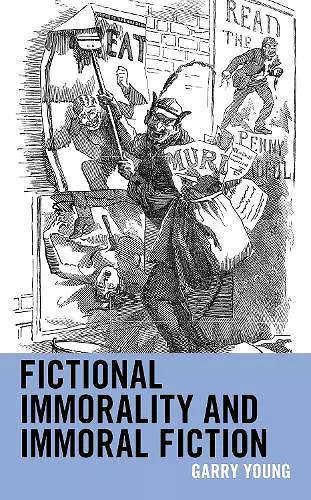Fictional Immorality and Immoral Fiction
Format:Hardback
Publisher:Bloomsbury Publishing PLC
Published:15th Jan '21
Currently unavailable, and unfortunately no date known when it will be back

It is commonplace for fictional content to depict immoral activities: the kidnapping of a politician, for example, or the elaborate theft of a national treasure, or perhaps the gruesome proclivities of a sadistic murderer. These and similar depictions can be found across a range of media, and in varying degrees of detail and realism. Fictional Immorality and Immoral Fiction examines potential conditions for transforming fictional immorality into immoral fiction, in order to establish what makes a depiction of fictional immorality and/or one’s engagement with it immoral. To achieve this aim, Garry Young analyzes fictional content, its meaning, one’s motivation for engaging with it, and the medium in which the fiction is presented (such as film, literature, theatre, video games) using philosophical inquiry. The end result is a systematic examination of fictional immorality, which contributes toward debates on the morality of depicting and engaging with fictional immorality, as well as the reach of censorship and other forms of prohibition, especially when the act depicted is of the kind that would be most egregious if carried out in reality.
The most thorough, comprehensive, and timely analysis of fictional immorality on the market. It builds a convincing theory across all types of media—films, books, games, and more—and will therefore be a foundational text for anyone interested in what it means to imagine transgressions. It also holds broader relevance for research on the nature of fiction and what relationship it has with our real lives. -- Marcus Schulzke, author of Simulating Good and Evil: The Morality and Politics of Videogames, Rutgers University Press, 2020
If you have ever wondered about the moral considerations at play in works of fiction, this book is for you. Young’s exploration of issues of immorality in fiction explores the gamut: films, novels, theatre, music and more. Young delivers a thought-provoking work with important and far reaching philosophical and psychological implications. -- Morgan Luck, Charles Sturt University
In Fictional Immorality and Immoral Fiction, Garry Young engages with a wide range of important debates—including the metaphysics of fictional characters, the nature of harm, and empirical research on violent media—to develop a nuanced account of the morality of fiction. Young demonstrates how his account of the ethics of fiction can be applied to difficult cases such as private fantasies, historical fictions, and deepfake pornography. This book would be of great interest to students and scholars of the ethics of literature, film, and video games. -- Christopher Bartel, Appalachian State University
In his latest book, Fictional Immorality and Immoral Fiction, Prof. Dr. Garry Young presents an in-depth analysis of the discussions surrounding the narrative depiction (in novels, films, games and digital media) of immoral behavior such as extreme violence, rape or murder. The book presents a comprehensive overview of all relevant research relating to these topics, and provides integration into an all-encompassing theoretical framework. While several chapters can be read as standalone case studies, deepening the insights Young elaborated in his recently published work, the book develops an intricate line of thought, cumulatively adding new layers, and building towards a sophisticated conclusion.
A remarkable strength of Garry Young’s work is that he effortlessly embraces a genuinely interdisciplinary approach. Young is a versatile researcher whose thoughts are equally grounded in cultural studies, psychology, semiotics and media research, always through the methodical lens of contemporary philosophy. This makes his insights truly unique, and puts him in an excellent position to make nuanced statements on such sensitive topics. In times where political, moral, and legal debate is too often held in an antagonistic and confrontational manner (even among academics), Young’s analysis provides a breath of fresh air, integrating different points of view and reconciling seemingly contrasting data.
ISBN: 9781793639196
Dimensions: 227mm x 161mm x 26mm
Weight: 590g
276 pages